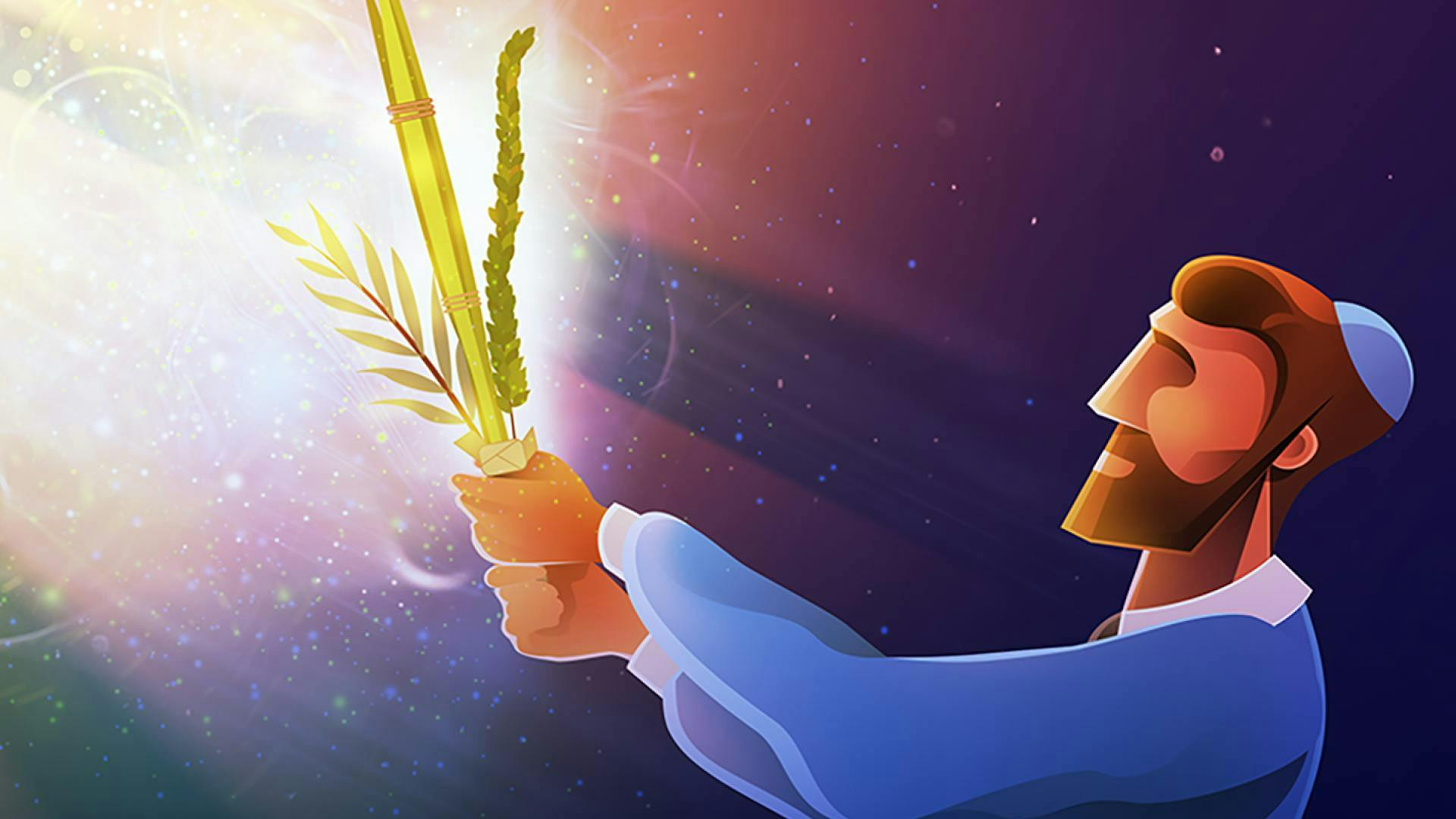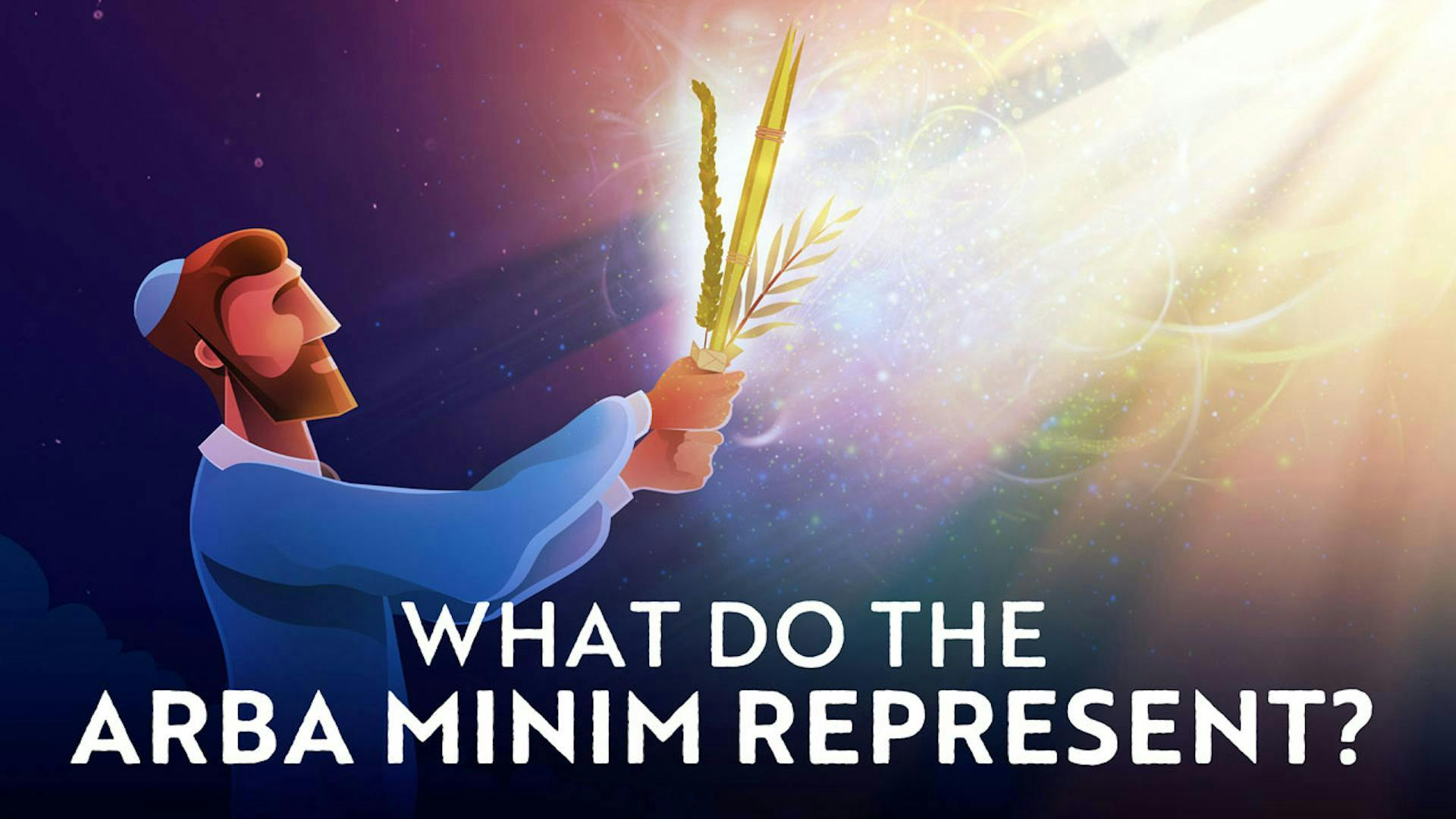The Meaning of the Four Species of Sukkot
What do these four plants have to do with Sukkot?
By Danielle Fisher | 24 September 2024 | 5 Minute Read

What Do the Four Species of Sukkot Represent?
Let’s be honest—the rituals of the holiday of Sukkot might just qualify as some of Judaism’s strangest holiday practices. For a week, we abandon our comfortable, temperature-regulated homes and subject ourselves to flimsy huts that shudder every time the wind blows. Then, we gather four species of plants in our hands and wave them all around. The Torah is very specific about the type of plants we must take—the fruit of a hadar tree, date palm fronds, a branch of a myrtle tree, and willows of the brook—yet it never tells us why. To anyone watching from the outside, the practice appears like some sort of ancient superstitious ceremony. There’s got to be some deeper meaning. What is the significance of the four species, the arba minim in the Torah?
A Time to Rejoice
Perhaps by exploring the essence of Sukkot, we can better appreciate the role of the arba minim in its celebration. One way to deepen this understanding is by examining the traditional holiday liturgy, where each of the three pilgrimage festivals carries a unique descriptor.
Passover is referred to as “zman herutenu,” “the time of our freedom.” That seems pretty fitting, since it commemorates when G-d freed us from slavery in Egypt. And Shavuot? It’s called “zman matan Toratenu,” “the time of the giving of our Torah.” Again, very on point. After all, Shavuot was when we received the Torah at Sinai. It seems that the Sages named each holiday after that holiday’s central essence— Passover is freedom time; Shavuot is Torah time.
So what about Sukkot? Well, turns out, Sukkot is dubbed “zman simchateinu,” “the time of our joy.” Seems somewhat generic, right? You’d think most holidays would be times of joy. The experience of joy isn’t exactly unique to Sukkot. That title—“zman simchateinu”— doesn’t tell us much about what the holiday actually celebrates… or does it?
The Key to Rejoicing
The Sages’ labeling of the holiday of Sukkot as “zman simchateinu” suggests that the true experience of joy is central and specific to the holiday of Sukkot. But why? And how do our Sukkot practices—namely, waving around the four species—relate to that? Let’s travel back to Leviticus, where Sukkot first appears in the Torah, to see if we can find some clues.
“Ach b’hamisha asar yom la’chodesh ha’shvi’ii, b’asaftem et tvuat ha’aretz, tachogo et chag HaShem shivat yamim— But on the fifteenth day of the seventh month, when you gather in the produce of the land, you shall celebrate the festival of HaShem for a seven day period” (Vayikra 23:39).
Okay, so it’s the end of the harvest season, before the winter rains begin. We’ve been working hard all year to provide food for our families, and now it’s finally time to gather in the fruits of our labors and celebrate. But the Torah has some specific instructions for how we should do so. Let’s continue…
“Ve’lakachtem lachem b’yom ha’rishon pri etz hadar, kapot tamarim, v’anaf etz avot, v’arvei nachal, u’samachtem lifnei HaShem Elokeichem shivat yamim—And you shall take for yourselves on the first day, the fruit of the hadar tree, date palm fronds, a branch of a braided tree, and willows of the brook, and you shall rejoice before the Lord your God for a seven day period” (Vayikra 23:40).
There’s that word again—u’samachtem, or simcha—rejoicing, joy. But if we look at that verse again, we’ll see that there’s actually two ways to read it:
Interpretation number one is that we first have to go grab a bunch of plants. And then, after we’ve gathered those plants, we should make a point to be joyous. Two separate commandments, each of which we need to complete in order to properly observe the holiday.
But there’s another way to interpret the verse. These two components—taking the four species and rejoicing before G-d—aren’t actually separate at all. In fact, one is key to fulfilling the other. How are we supposed to rejoice before G-d? By taking these four plants. Somehow, the Torah is suggesting, these four species are the vehicle for our rejoicing.
The Secret of True Joy
So now we’ve discovered two very important points about Sukkot:
- The essence of Sukkot is about simcha—happiness, or rejoicing.
- The four species that the Torah very specifically commands us to gather—the etrog (citron), lulav (palm branch), hadas (myrtle), and arava (willow)—are essential to our rejoicing.
What is so special about these four plants that they tap into the very essence of Sukkot? Join Ami Silver and Imu Shalev as they explore the extraordinary meaning behind the arba minim and discover how the four species actually connect us to the true source of joy. Watch or listen here:
What is Aleph Beta?
Aleph Beta is a unique kind of Torah library. Led by our founder, Rabbi David Fohrman, we are dedicated to high-level, textual Torah learning for adults that is intellectually and spiritually sophisticated, that enlivens your Jewish practice and helps you forge a deeper connection to God. Whether you’ve been learning in yeshiva for years or you’re just beginning your Torah journey, you’re sure to find something meaningful and surprising waiting for you here.
Browse our library of over 1,000 beautifully produced animated videos, podcasts, deep dive courses, and printable guides. Topics include the weekly parsha, Jewish holidays & fast days, laws & mitzvot, prayers, relationships, big philosophical ideas and more. Have something to say at the Shabbos table that will amaze your family and guests and bring deep meaning into their lives.


